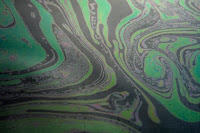
I must control everything to lose control and still be successful.
Photographing an event or happening is different than many subjects because an event is uncontrollable. When photographing the landscape lighting and composition can be controlled with time and patience. With nude studies a model is selected and can be asked to adjust their pose. An event is not under the photographers influence. To succeed the photographer must be in control over the camera so they will be prepared to capture the event.
Photography has always required a photographer to be in control of their medium. The traditional photographer must know how to expose film properly, develop the negatives, and print the images. The computer in a digital camera automates much of the technical aspect of image making with automatic exposure and focusing. But it is important to remember that automated control is still control. If the computer were to malfunction and lose control over the technical aspects of the camera then no images could be made.
The image must be 'made' before the event happens; similar to pre-visualization. The photographic equipment must be prepared before the oil drop is released. I must have the lighting assembled and on, the camera focused, and the film loaded into film holders.
A lot of control is required over the environment for the oil to enter the thin film state. Some of the variables that need to be solved and controlled are the temperature and cleanliness of the water as well as the temperature and dirtiness of the oil.
Once the oil drop is released I lose all control over how it will interact with the water. The thin film interference will produce vibrant colors for about a minute; if I needed to refocus I would miss the shot and have to reset.
There is a numinous moment when the oil contacts the water and color is created. Despite my best efforts there is a chance the oil wont enter the thin film interference and no colors will be produced . Could chance be attributed to the random creation of beauty? The difference between a still life and event is chance always exists in events. Why does a brilliant green appear and swirl to the left in an appealing manner? Or why does the thin film interference not produce colors?
When something doesn't work it can be an interesting problem to be solved. But why something works is an existential question. Is it chance and chaos that causes the oil to spread out in a visually interesting pattern? Does pure cause and effect from the big bang to now lead in a line to the moment the oil does something beautiful?
The philosopher Immanual Kant would say that beauty is in the contemplative mind. That because of how your mind operates it perceives something as beautiful because it must. To Kant beauty comes from within the viewer.
In contrast to Immanual Kant, the greek philosopher Aristotle would say that beautiful things are a lesser version of the ideal object. A folding metal chair is an actual object that was made in imitation of the potential for 'chair'. For Aristotle, Beauty comes from beyond nature.
But whatever causes the beautiful to manifest,I must acknowledge I only have control over my equipment and I do not have control over how the oil will interact with the water.
Wether the beautiful comes from within or from the outside, I must control everything to lose control and still be successful.



No comments:
Post a Comment